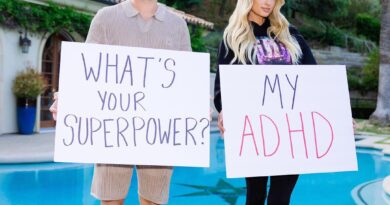How Many of Us Will Be Diagnosed With ADHD?
ADHD, or Attention Deficit Hyperactivity Disorder, is no longer a rare diagnosis confined to childhood or a niche issue. With increasing awareness and a better understanding of the symptoms, it’s become a part of the conversation for people of all ages, from children to adults, from school to the workplace. But just how many of us will end up being diagnosed with ADHD in our lifetime?
The Growing Numbers
ADHD affects millions of people worldwide, but the actual prevalence rate varies depending on the criteria used. Globally, it’s estimated that around 5-7% of children are diagnosed with ADHD, with roughly 2.5-4% of adults also meeting the criteria. In the United States, recent surveys suggest that 9.4% of children aged 2-17 have been diagnosed with ADHD at some point, according to the CDC. Among adults, studies indicate that about 4.4% of the population has ADHD, though many remain undiagnosed. Interestingly, the increase in diagnoses is not necessarily because more people suddenly have ADHD. Instead, it’s due to the increased awareness, better tools for assessment, and a wider understanding that ADHD is not just about hyperactivity but also inattentiveness and impulsivity, which can present differently depending on the individual.
Why Are Diagnoses on the Rise?
There are several factors contributing to the increase in ADHD diagnoses. One of the primary reasons is the shift in our understanding of what ADHD looks like. The classic image of a hyperactive, disruptive young boy is no longer the only form recognized. We now understand that ADHD affects people in diverse ways—sometimes it means being unable to focus, struggling to stay organized, or facing intense emotional ups and downs. This broader recognition means that people who might have been overlooked in the past—particularly girls and adults who have inattentive symptoms without hyperactivity—are now more likely to be identified and supported.
Cultural shifts are also playing a role. With the internet providing platforms for people to share their experiences, more individuals recognize their own struggles in the stories of others. Social media, in particular, has made it easier to access first-hand accounts of life with ADHD, which helps destigmatize the disorder and encourages people to seek a diagnosis if they feel they may be struggling.
Adult Diagnoses: The Silent Majority
One area seeing a surge in attention is adult ADHD diagnoses. Many adults today grew up in times when ADHD was not well understood, and their symptoms were dismissed as being lazy, forgetful, or simply uninterested. Now, adults are increasingly getting diagnosed—sometimes because their children are diagnosed first, prompting them to look at their own experiences. This generational aspect is a significant part of the story, as it’s common for ADHD to run in families, and understanding one person’s diagnosis can lead to others in the family being tested.
Could It Be You?
If you’re wondering whether you might have ADHD, you’re not alone. Many people live undiagnosed for years, adapting to their challenges without knowing why some things seem harder for them than for others. The symptoms of ADHD often go unnoticed, especially if they aren’t as obvious as hyperactivity. It’s the quiet struggle to focus, the mounting difficulty of staying organized, or the emotional intensity that never quite fits the moment that can often be missed until something prompts a closer look.
Seeking help can be a game-changer. A diagnosis is not a label of failure—it’s a chance to better understand yourself and find the strategies that will help you thrive. Many people experience a profound sense of relief when diagnosed because it gives a name and a reason for years of unexplained struggle, allowing them to move forward with more clarity.
The Future of ADHD Diagnoses
As awareness continues to grow, it’s likely that even more people will be diagnosed with ADHD. This isn’t necessarily a bad thing—it simply means that those who were previously struggling in silence can access support and resources. **Better understanding** also means more accurate diagnoses, ensuring that people who need help receive it, while those who might be experiencing something else are also properly evaluated.
With evolving definitions, refined assessments, and growing acceptance, the question is not just about how many of us will be diagnosed with ADHD, but about how we as a society will support and empower those who are. ADHD, like any condition, is part of the diversity of human experience, and recognizing its prevalence is one step towards a more inclusive and understanding world.
